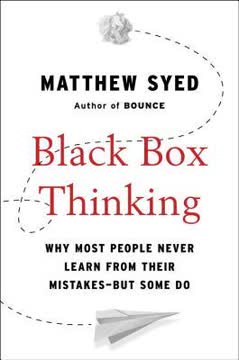Key Takeaways
1. Financial statements reveal the true state of football clubs
The cash flow statement is a very good "why" document that explains to the reader the reasons behind the overall increase or decrease in cash over the period.
Balance sheet basics. The balance sheet provides a snapshot of a club's financial position, showing assets, liabilities, and equity. Key components include player registrations as intangible assets, stadium and training facilities as tangible assets, and outstanding transfer fees as liabilities.
Income and cash flow. The profit and loss account details revenue streams and expenses, while the cash flow statement tracks actual money movements. Revenue typically comes from matchday income, broadcasting rights, and commercial deals. Major expenses include player wages, transfer fees, and stadium costs.
- Revenue streams: Matchday, broadcasting, commercial
- Key expenses: Player wages, transfer fees, stadium costs
- Cash flow categories: Operating, investing, financing
2. Player transfers and wages dominate club finances
The amortisation expense decreased in 2016 compared to 2015 by almost £12 million. This is because United bought midfielder Angel Di Maria in 2015 for £60 million on a five-year contract, which works out as £12 million amortisation per year. He left the club a year later and so this expense was no longer being incurred.
Transfer fee accounting. Player transfers are treated as intangible assets and amortized over the contract length. This creates a discrepancy between cash spent and expenses recorded, as large transfer fees are spread over several years in the accounts.
Wage inflation pressures. Player wages have grown dramatically, often outpacing revenue growth. This puts pressure on club finances, especially for teams without consistent Champions League income. Many clubs struggle to maintain competitive squads while keeping wage-to-revenue ratios at sustainable levels.
- Transfer fee amortization: Spread over contract length
- Wage-to-revenue ratio: Key financial health indicator
- Bonus structures: Can significantly impact wage bills
3. Broadcasting and commercial income fuel football's growth
The English Premier League deal with domestic broadcasters Sky and BT Sport is worth £5.1 billion, and the overseas rights a further £3.2 billion, for the seasons 2016–19.
TV rights explosion. Broadcasting deals, especially for the Premier League, have grown exponentially. This has transformed club finances, allowing even smaller clubs to compete for high-profile players. However, it has also widened the gap between leagues and divisions.
Global commercial opportunities. Top clubs leverage their international fan bases to secure lucrative sponsorship and merchandise deals. This has become a key differentiator between the financial elite and the rest of the football world.
- Premier League TV deal: Domestic + international rights
- Commercial revenue streams: Sponsorships, merchandise, tours
- Financial gap: Between leagues and within leagues
4. Financial Fair Play rules shape club strategies
FFP is an umbrella term which covers a variety of ways of gauging the finances of football clubs. The rules are set by UEFA for those clubs that qualify for European competitions and by individual football authorities for their domestic competitions.
UEFA's break-even requirement. Clubs must balance their spending with revenues over a three-year period. This aims to prevent unsustainable spending and reduce the influence of wealthy benefactors. However, it has been criticized for entrenching the dominance of established clubs.
Domestic variations. Different leagues have implemented their own versions of financial regulations. These often focus on wage control or profitability. The effectiveness and enforcement of these rules vary significantly across countries and divisions.
- UEFA FFP: Break-even requirement, sanctions for non-compliance
- Premier League rules: Short-term cost control, profitability and sustainability
- EFL regulations: Differ by division, focus on wage control
5. Ownership models determine a club's financial approach
There are many motivations for owning a football club, all of which have merits and demerits. The biggest investor in a club however is usually the fanbase, most of whom commit themselves emotionally to supporting the club for a lifetime, whereas the owners, many of whom are well meaning, are more transient.
Traditional vs. new money. Ownership models range from local businesspeople to international consortiums and state-backed entities. Each type brings different financial resources, objectives, and management styles.
Fan ownership alternatives. Some clubs, particularly in Germany, operate under member-ownership models. While this can promote financial responsibility, it may limit a club's ability to compete with heavily-backed rivals.
- Ownership types: Local fan, wealthy individual, consortium, state-backed
- Financial objectives: Profit-seeking, trophy asset, community focus
- Management approaches: Long-term investment vs. short-term success
6. Valuing football clubs involves complex methodologies
There's no "correct" price for a football club, just as there is no "correct" price for a football player, a house or a piece of art.
Traditional valuation methods. Approaches like discounted cash flow analysis and revenue multiples are applied to football clubs, but with significant caveats. The unpredictable nature of sporting success and relegation risk complicates financial forecasting.
Football-specific factors. Valuations must consider unique aspects such as player values, stadium assets, and brand strength. The Markham Multivariate Model attempts to incorporate these football-specific elements into a valuation formula.
- Valuation methods: DCF, revenue multiples, asset-based
- Football-specific considerations: Player values, relegation risk, brand strength
- Markham Multivariate Model: Tailored approach for football clubs
7. Red flags in financial reports signal potential issues
If clubs are late in submission it can only be if there is an item in the accounts that is being disputed at board level and the directors cannot agree, or the club doesn't want fans (and other interested parties) to see some of the figures, for whatever reason.
Delayed reporting. Late submission of financial reports often indicates underlying problems or attempts to control the narrative around a club's finances. This can be a warning sign for fans and potential investors.
Limited disclosure. Some clubs exploit loopholes to provide minimal financial information. While legal, this lack of transparency can mask financial difficulties or questionable management practices. Fans should be wary of clubs that consistently provide bare-minimum disclosures.
- Warning signs: Delayed reports, minimal disclosures, frequent year-end changes
- Transparency issues: Small company exemptions, narrative control
- Fan awareness: Importance of understanding club finances
Last updated:
Review Summary
Readers praise The Price of Football for its comprehensive and accessible approach to football finance. Many appreciate how it explains complex accounting concepts using real-world examples from football clubs. Reviewers find it informative, engaging, and eye-opening, despite its technical subject matter. Some note that parts can be challenging for those without financial backgrounds, but overall, the book is well-received for its unique perspective on the sport's financial landscape. Several readers express surprise at enjoying a book about finance, highlighting its appeal to both finance professionals and football enthusiasts.
Similar Books









Download PDF
Download EPUB
.epub digital book format is ideal for reading ebooks on phones, tablets, and e-readers.




